Biodiversity, Conservation, and Recreation on the Flint
The last week of Maymester 2022’s Field Program in Ecological Problem Solving heavily featured the Flint River, which cuts through the western half of Georgia, from south of Peachtree City to the Florida-Georgia line.
On the final leg of their journey, students learned more about the policies surrounding the Flint River, the agencies invested in it and the people that rely on the crucial resource. It was only natural that the group spend a day afloat on the river.
Slathered in sunscreen and sweating in the already 90-degree weather, the class gathered on the bank of the Flint River on the morning of June 1 for an educational paddling excursion.
Three members of the Flint Riverkeeper, a nonprofit organization, gathered with them: R.J. Gipaya, watershed field specialist; Henry Jackson, director of outreach and development; and Gordon Rogers, riverkeeper and executive director.
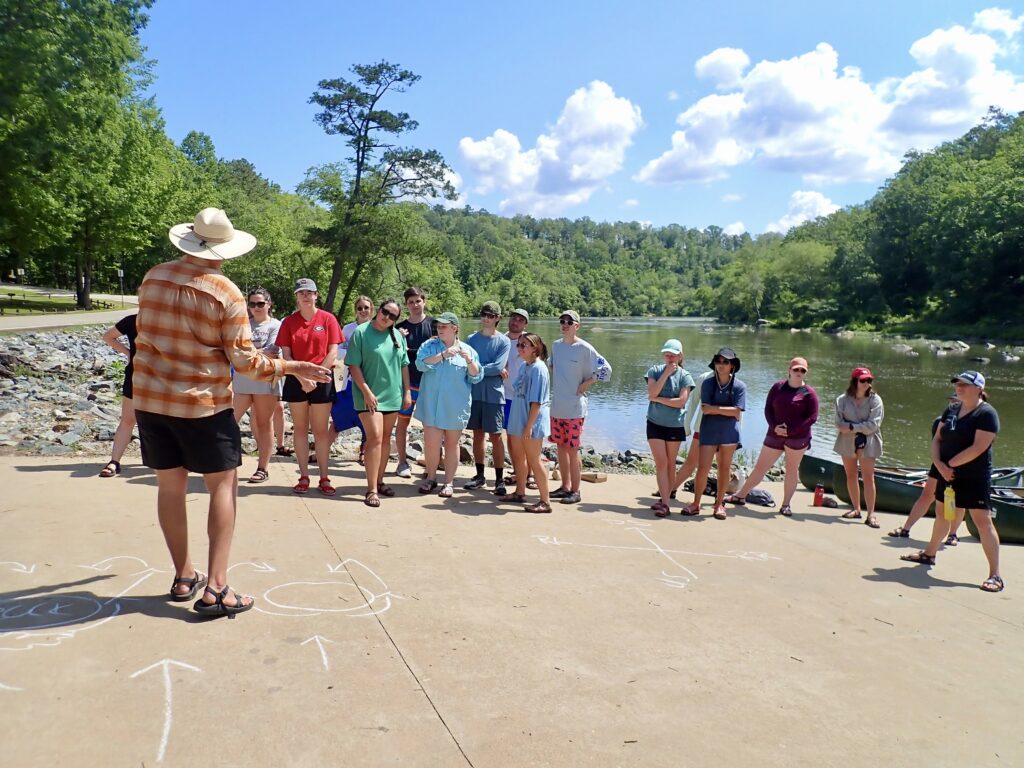
Rogers offered the students some background on the organization and the river itself before the class launched their canoes.
It turns out that riverkeeper isn’t just an enviably cool title—though certainly it’s also that. It’s a civic role, one that a network of organizations world-wide takes very seriously.
Riverkeepers are a kind of water watchdog. When water laws aren’t upheld, or infrastructure projects and human activities pose a major threat to a river system, they speak on behalf of anglers, businesses and townspeople to ensure access to clean freshwater. When necessary, they’ll seek legal action.
Because access to water is access to equity.
“Water is commodified in most places,” Rogers said. “There have been repeated attempts to commodify it in this country. But water is meant, in my view, to be shared by everybody so that everyone has enough: industry, farmers, residential paddlers, people that want to have a baptism, swimmers, fishermen. We all deserve to have it. And that’s what we stand for.”
But staff members were quick to say that legal action is a last resort. Mostly, what keeps the Flint Riverkeeper team busy is understanding the Flint better, to ensure that their recommendations are sound. Gipaya plays a large role in that, as the watershed field specialist.
His favorite part of the job, though, is the kind of work he did that day, guiding people on an ecological tour of the Flint, or what he calls “showing people the gem that Georgia has.”
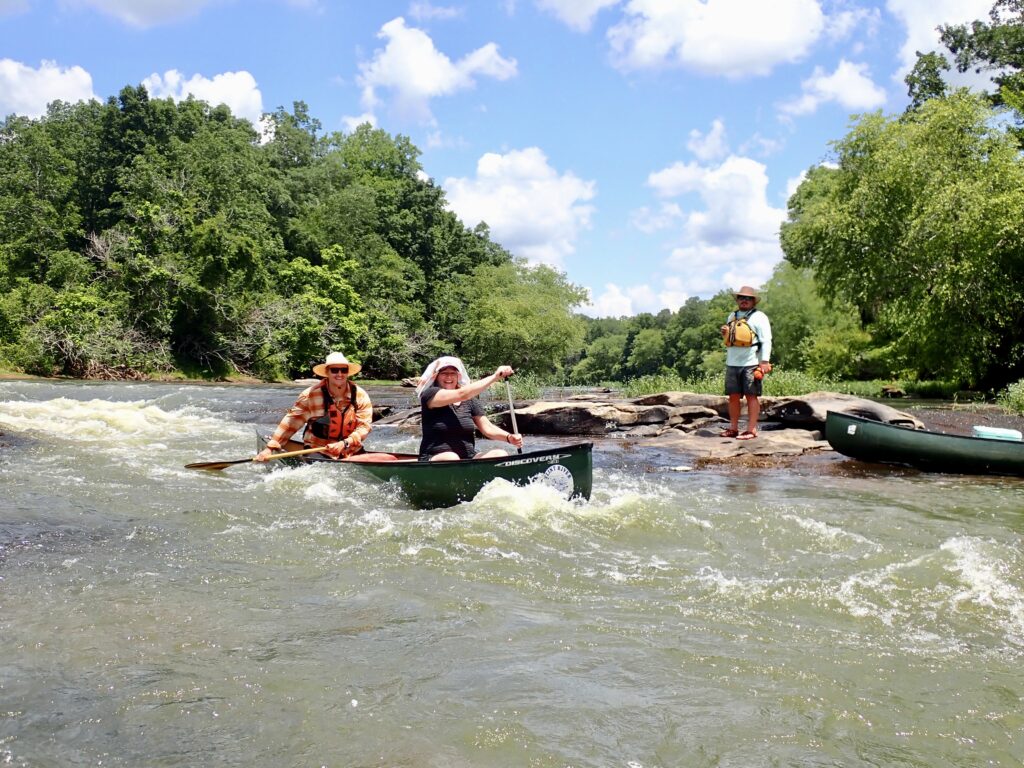
On the water, the group made its way to Table Rock, students laughing when stuck on banks and rocks and pausing just after Rebel Chute to cool off and swim.

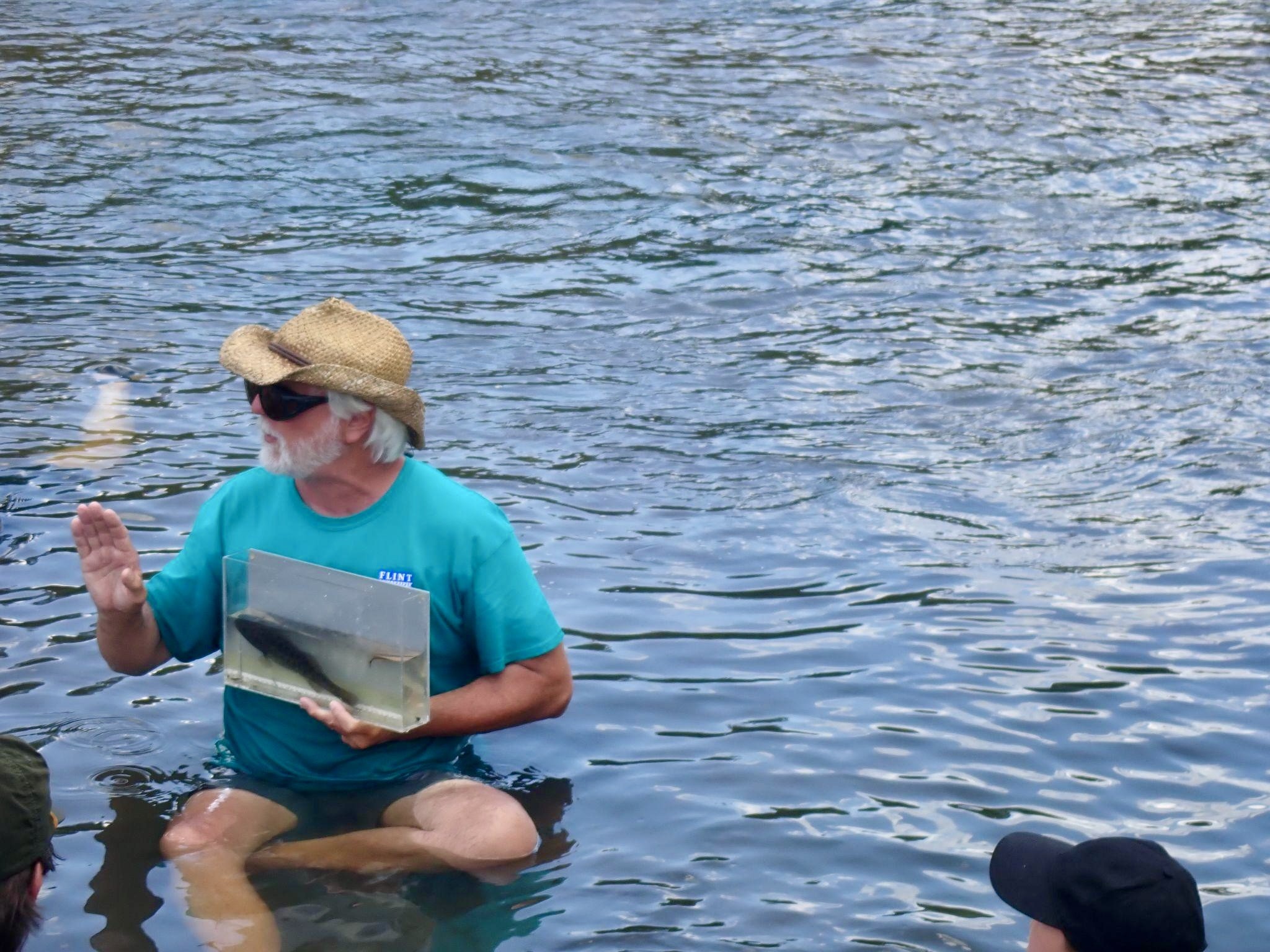
At Table Rock, the group settled in for an open-air class led by Rogers. Lecture visuals included living fish: a few-month old gar, and a shoal bass caught by Gipaya.
“Georgia is way more diverse on almost every axis you can measure than any state in the Union,” Rogers began. “It starts with the geology of Georgia.”
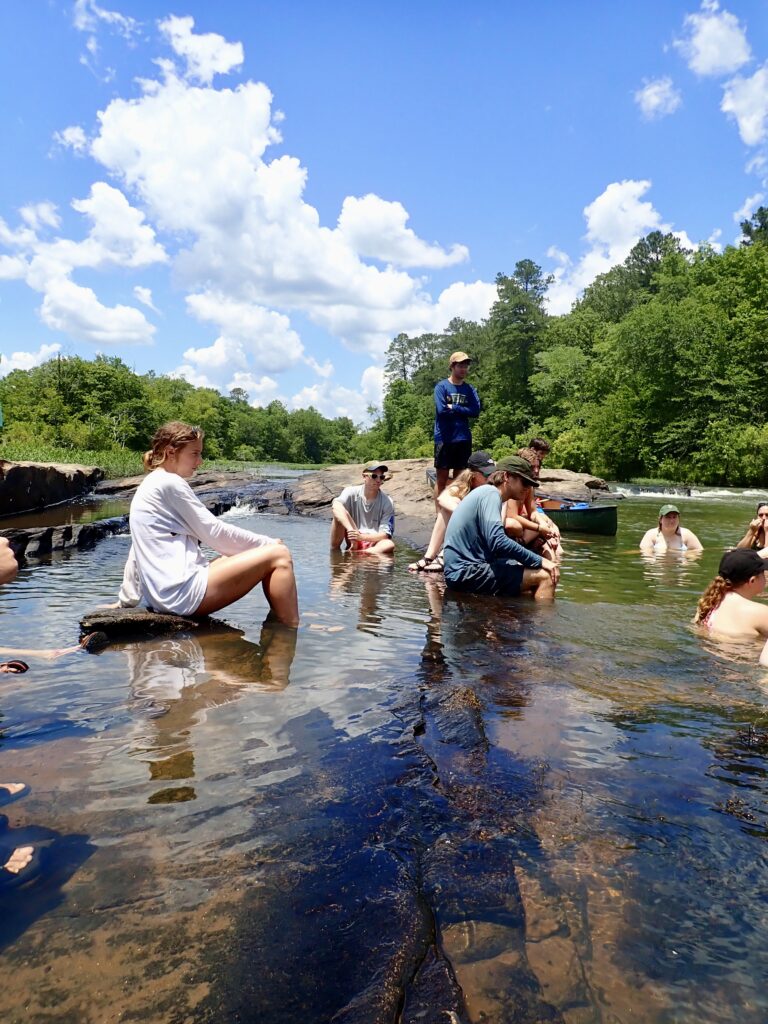
Students passed around the shoal bass before it was released. The fish is important to the Riverkeeprs: in an effort to draw attention to the importance of conservation and freshwater species, the group lobbied the government to name the sunfish the state’s official Native Riverine Sport Fish. It worked, with the species earning the distinction in June of 2020.
An investigation is also ongoing to determine why shoal bass (Micropterus cataractae) are less abundant in the lower Flint than in the upper, which the organization is peripherally supporting. It’s a two-pronged question. Is the disparity in shoal bass abundance naturally occurring or the result of human activity? If the relative scarcity of shoal bass in the lower Flint isn’t naturally occurring, stakeholders will have to isolate the cause and then ask what can be done to better manage the river—an issue of policy. The work is funded by the state’s department of natural resources and is being conducted jointly by Auburn University, The Jones Center and Georgia Department of Natural Resources at Albany.

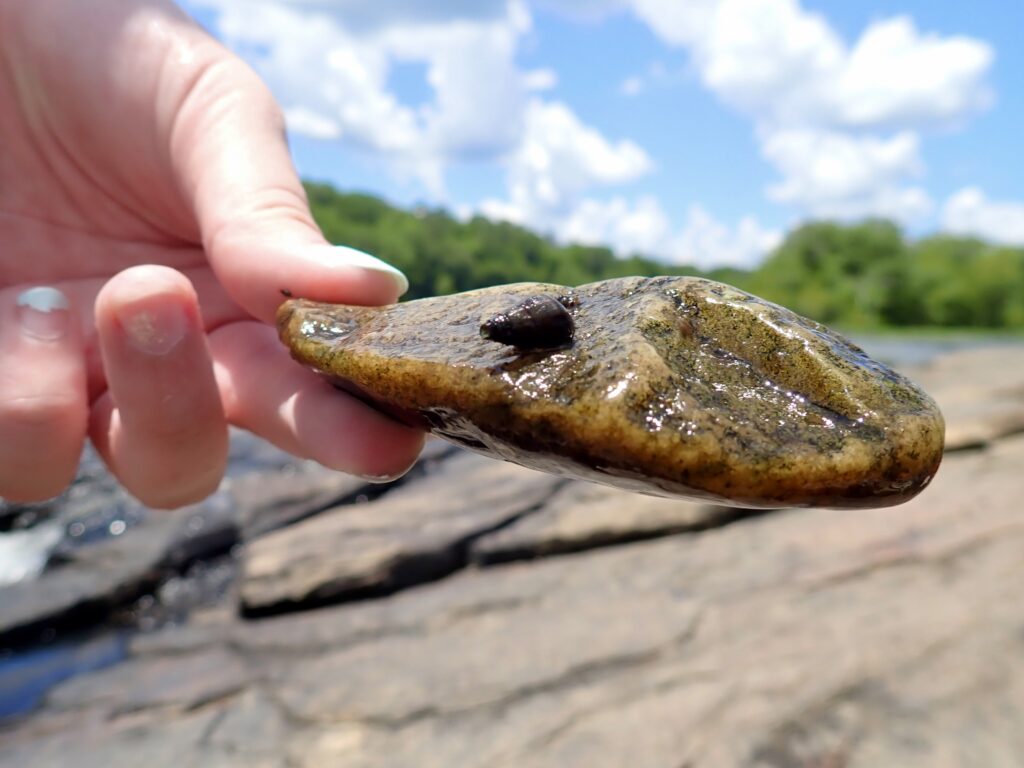
Geographic variation abounds in the state. Karst limestone ridges cut across the northwest, and the hard rock spine of the Blue Ridge, cooled from igneous and metamorphic rock, butts across the northeast and what is now Piedmont, which forms the foothills of the Appalachian ridge.
Georgia’s coastal plain also sustains rich biodiversity and captures several distinct habitat types.
Rogers explained that the Flint is one of the most ecologically rich river basins in the Southeast. “We have three ecosystems touching each other here. In terms of numbers of species of fish and bivalves, the only place in North America more diverse than this is in Alabama.”
That convergence of distinct branches makes the Apalachicola-Chattahoochee-Flint River Basin a perfect case study in water management challenges faced across the U.S.
But Rogers didn’t mince words. The river system isn’t some untouched paradise. The limestone shoals of the lower Flint were heavily altered to assist in navigation. Researchers aren’t yet sure if the notching is part of what impacts the relative scarcity of shoal bass in the lower part of the river compared to the upper.
But that question—and what to do with the answer, once found—is exactly the kind of problem students learned to examine thoughtfully and thoroughly during Field Program in Ecological Problem Solving.
A lasting impression
Over the course of two weeks, students gained an integrated view of the river basin and of the social, economic, and ecological factors that weave together to present a tangle of water issues and possible solutions.
“It does feel like the highlights move on with you. You have to take this kind of experience as a holistic perspective,” said Jonathan Parish. “We’re able to see each step of the ACF basin. And I think each one just kind of adds another piece to the entire puzzle that we’re learning about.”
For many of the students, seeing the work being done in Atlanta at the opening of the trip left a lasting impression, especially the work being done at the AgLanta Urban Food Forest at Browns Mill.
They were impressed by the bridging of science with community input. “Atlanta was a really nice cross section of people on the inside and outside,” said Rose Barfield.
“That was one of the groups where we saw community involvement,” agreed Logan Hall. “That was really important for the environmental justice aspect of this class. It was really cool to see a city planting food.”
For one student, that coincides exactly with her future plans.
“I’m a double major in the College of Ag and I want to go into sustainable ag,” explained Madison Caren. “Seeing that was just really cool. It’s a good balance of doing sustainable ag but also the community work that they were doing. They have a lot of really good practices there, like the use of organic compost, mulching over the tops of the soil so there’s no erosion and micro-irrigation to reduce erosion as well. It was like all of the best practices that they tell us in one spot.”
Student Pearce Buxton was also conscious that the trip might play an integral role in her future. She was struck by the networking opportunities that presented themselves at each stop. “Stakeholders explicitly talked about jobs and internships being offered by their organizations and how willing they were to discuss it further with you if you were interested,” she said.
And for other students, the camaraderie the trip fostered was just as important as the academic and practical content they learned.
“Everyone on this trip is amazing,” said McKenzie Leatherwood. I’ve loved getting to know my classmates and Kristen, Jeff and Amanda. The experience has been phenomenal and there’s no other course at UGA that’s going to offer the same experience.”
Leatherwood noted that she gained a deeper understanding the complexity of the water wars, and the diversity of opinion among stakeholders. “There’s no right and wrong. There’s just black, white and gray. It was fascinating to listen to them talk about their experiences, talk about their expertise and try to find how, in these gray areas, they can come to an understanding so they can both get what they need.”
At least one member of the class already feels the significance of what she gained through the Ecological Problem Solving course—and not just academically.
“This course helped me grow as a person,” Pearce Buxton said. “It was incredibly impactful. I learned how to adapt to new environments very quickly and how to manage my time for school more efficiently. I was able to work harder than before and think more critically. This trip also provided me with a lot of new friends…[it] provides every ecology student an opportunity to find their Odum family.”
The first two stories in this series can be found here and here.

